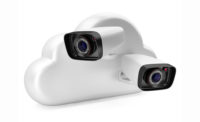Today’s video management systems (VMSs) have powerful capabilities, including the ability to manage video systems installed at multiple locations, to use heat mapping to count people in an area and keep track of how long they stay there and to use analytics and audio to detect left objects, weapons and even bullying behaviors. Some security dealers are finding creative ways to leverage these capabilities to solve business problems for their customers — including problems that may not be security related.
Here are six of the most unique and interesting applications that SDM has heard about recently.
Vaping in the Boys Room?
Smoking in the boys’ room may be a thing of the past thanks to smoke detection technology. But in recent years, schools have seen an increase in student vaping — a habit that may not trigger a smoke detector. And putting cameras in a restroom is generally considered an invasion of privacy.
Bay Shore, N.Y.-based dealer A+ Technology and Security Solutions offers schools a way to address this issue, however, by using vape detection technology developed by its sister company IP Video Corporation that A+ integrates with video cameras via a video management system.
The vape detectors, sold under the name Halo, work by measuring air quality and can detect various airborne gases and particles, including THC, an element found in marijuana; carbon monoxide and others. When one of these detectors installed in a school restroom is triggered, an alert is sent to the video management system, which can also pull up images from a video camera installed outside the restroom.
The detectors are being well received by schools, said David Antar, president of A+ Technology and Security Solutions, which has installed about 1,000 of the devices.
Moving forward, IP Video plans to add audio capability to its detectors, Antar notes. The goal is to detect incidences of violence or bullying by, for example, detecting sound in a school restroom during times when students should be in class. The video management system would provide the smarts to know when restrooms should be quiet.
Vehicle Escort in High-Security Areas & More
Jim Lantrip, senior vice president of operation for Dallas-based dealer Allied Universal Technical Services, offers several examples of how the company has used video management to solve problems for business customers.
In one example, Allied Universal used video management technology to help streamline logistics for a shipping port that is required to comply with Transportation Security Administration requirements. The client uses video management to remotely escort drivers entering the port without a Transportation Worker Identification Credential (TWIC) by keeping a video camera trained on the driver.
Allied Universal also has installed video management systems in combination with audio equipment to help protect hospital emergency rooms. These systems can detect hostile behaviors such as when it looks like somebody is hitting somebody or has taken a fall, triggering a security guard or emergency medical technician to go to the ER, Lantrip explains.
By leveraging multiple technologies, the system also can detect knives, handguns and rifles, Lantrip notes. “We can offer a level of protection that never existed in that space,” he says.
In a third example, Allied Universal helped increase employee productivity for a business customer by using video management heat mapping technology. The data showed that a lot of people frequently went to one specific floor and after investigating why, the company learned that the vending machine on that floor had a specific drink that people liked. The company made the drink available on all floors, thereby making employees just a bit more productive.
Enhancing Thermal Detectors
Sonitrol Southwest Ohio of Miamisburg, Ohio has been using more thermal detectors, sometimes called thermal cameras, now that the company has been able to enhance the detectors’ performance by using the video analytics capability built into the video management systems that it recommends for customers.
“We use it in environments where you have a lot of traffic that may or may not be intrusive,” explains Wayne Lisle, Sonitrol Southwest Ohio vice president and general manager. The thermal detectors are well suited for areas where the customer wants protection but doesn’t want to add the lighting that would be necessary with conventional cameras, Lisle observes. “What we’re using it for is to determine is there a person there and do we need to dispatch?”
The image from thermal detectors is a heat signature and won’t provide a vivid picture of a person or what the person is wearing. But when the video analytics technology detects what it would interpret as a person, it generates an alarm. Central station operators can then check in on the location and dispatch if appropriate.
Lisle adds that the technology is sophisticated enough to be able to gauge how far away an intruder is from the thermal detector.
A Unique Safety Application — With a Sales Tip
Norfolk, Va.-based security dealer Security 101-Hampton Roads leveraged the heat mapping capability of a video management system to improve worker safety for a manufacturing client.
As Matthew Netardus, a systems designer for Security 101 Hampton Roads, explains, the company has wide hallways that were shared by employees and vehicles. Employees are required to remain in a specific lane, with the adjacent lane being used for vehicles. But during lunch time, vehicles don’t use the hallways, which led to some employees being less careful about not walking in the vehicle lane. This was a bad habit to get into, as some employees who were accustomed to doing so were injured while walking in the vehicle lane at times when it was open to vehicles.
The solution was to use video management technology to track pedestrian traffic in the vehicle lane and generate alerts so that security personnel can check the associated video cameras and take action as needed.
Netardus looks for issues such as these that he can solve for potential business clients because, as he explains, “It’s easier to get funding for safety. Safety is first; security is secondary.”
Police Departments Share Video
Demus Oxford, owner of Richmond, Va.-based Security 101-Richmond, offers an example of how the company was able to use a video management system to enable multiple police departments to share video as needed.
A key video management system capability is to manage video installations located at multiple locations. Often all locations are part of the same company or organization; but in this case, the video management system enables a task force comprised of representatives from county, municipal and university police departments to share video when managing an incident.
“We are using video cameras from different locations and platforms,” Oxford explains. “Even though they are not on the same platform, we can bring in video from different systems.”
One of the police departments is the owner of the system; but as Oxford explains, the participants picked the cameras they would want to share and “as long as the licenses are active, all three police departments can see them.”
He added, though, that access to the cameras is not indefinite. Sharing is only possible at times when the police departments are cooperating on managing an incident.
Managing an Optical Turnstile
Edison, N.J.-based Dynamic Security of New Jersey uses video management to enable customers’ security personnel be alerted when someone attempts to jump an optical turnstile integrated with automatic door locks and access control.
“If a person tries to jump over the glass, the video [equipment] sees it and locks it down,” explains Barton Kartoz, Dynamic Security of New Jersey vice president.
Brainstorming
The examples discussed here are just a few of the creative ways that dealers have helped customers using video management systems. Perhaps this gives readers some food for thought on how they could use video management to address problems for their own customers.
More Online
For more video management system coverage visit SDM’s website where you will find the following articles:
“Video Management Software (VMS): It’s How You Use It”
www.SDMmag.com/video-management-software-vms-its-how-you-use-it
“Training Holds the Key to Securing Customers’ VMS Success”
www.SDMmag.com/the-key-to-securing-customers-vms-success
“Feeding the Growing Appetite for Video Surveillance Data”
www.SDMmag.com/growing-appetite-for-video-surveillance-data
“Security VMS Against Cyber Attacks”
www.SDMmag.com/securing-vms-against-cyber








